Power Source
Battery Life
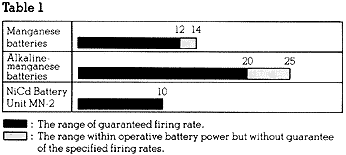 |
|
Firing Rate
The maximum firing rate in continuous shooting varies according to the power
source in use, as shown in the table below.
|
Table 2 |
||||
|
Maximum Firing Rate (fps) * |
||||
|
Shutter Speed |
Manganese batteries |
Alkaline-Manganese batteries |
NiCd Battery Cell MN-2 |
AC/DC Converter MA-4 |
|
1/125 sec - 1/2000 sec |
3.8 fps |
3.8 fps |
5.5 fps |
5 fps |
|
With
Mirror Lock Up |
4 fps |
4 fps |
6.0 fps |
5.5 fps |
* at 20 degree C
(60 degrees F)
External Signal Connecting Cord MC-14
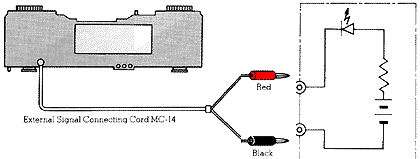 |
|
Caution:
2) Always use DC power for circuits to be controlled by the terminal.
3) In connecting the External Signal Connecting Cord MC-14, make sure to connect the cord's black banana plug to the minus side of the power supp/y.
Convenient Accessory
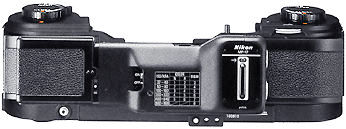 |
|
Accessories
Remote Control Accessories
 |
Remote Cord MC-12A with Button Release |
 |
|
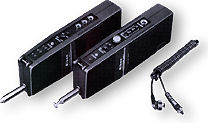 |
|
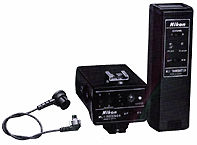 |
|
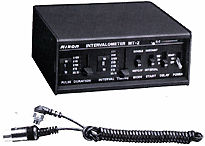 |
Time Lag Shooting Accessory Intervalometer MT-2 |
Maintainance and care for Magazine Back
2) With the magazine back attached, do not use the rewind slides on the motor drive. If you do, the intervals between frames might vary.
3) Do not use cassettes which have been deformed or damaged through long use. They will cause malfunctions (such as varying frame intervals or overlapping of frames).
4) Because the rear cover is adjusted to each magazine back, take care not to deform the cover when you open, detach or replace it.
5) After loading cassettes, be sure to take up any slack in film to prevent overlapping of frames or inadequate film advance.
6) When the motor drive is used at temperatures of -20°C or lower, film perforations might tear due to fast winding speed, making it impossible to advance film. Do not expose film (cassettes) to low temperatures for long periods; load the cassettes in the magazine back immediately before shooting.
|
| | | Back to Index of Nikon F3 Models Back to Pictorial History of Nikon SLRs |
|
|||||
|
|||||||
| Back to Index Page | of Instruction Manual of 250 Bulk Film Backs
| Back to Main Index Page | of Film Backs for Nikon F3
| Back to Nikon F3 Site |
| About this photographic site | Contributions and Credits |
 |
Home - Photography in Malaysia |